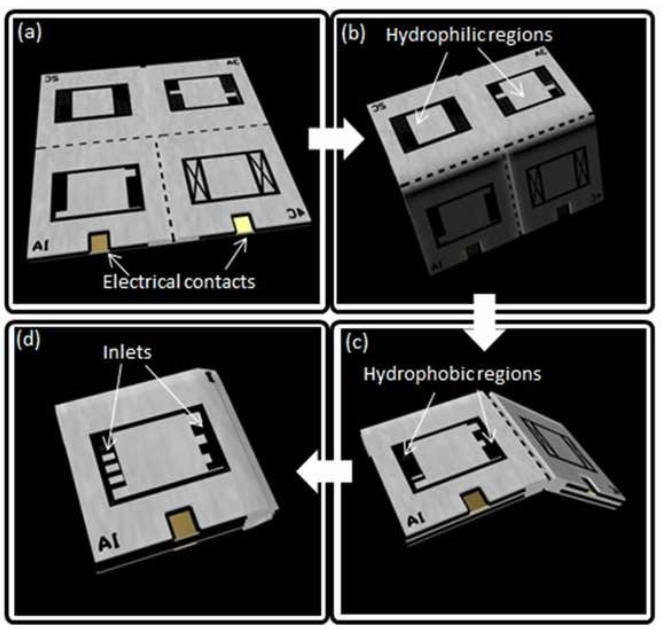American engineer has learned to print on paper batteries running on dirty water

Choi Sokhyng, an engineer from Binghamton University (USA), invented the technology for making inexpensive batteries. The basis of the battery is paper, bacteria and water. Such a battery can be used for various sensors and other devices in places remote from civilization. The author called his system "microbial fuel cell." The work was published in the journal Nano Energy .
The battery extracts energy from the life of microbes. As the creator of the device explains, in any dirty water there is already enough organic matter and bacteria. A drop of such water deposited on a paper substrate can be used as an energy source. Paper is cheap, environmentally friendly, and perfectly absorbs water.
')
The basis for the batteries is printed on paper, which can then be folded and compactly packed. Nickel particles sprayed onto a paper substrate are used as the cathode. The anode is carbon particles deposited on the paper by screen printing . Its contours outline the boundaries of the battery on paper. The remaining surface of the paper is impregnated with water-repellent wax. The cost of production of such a battery is only five cents.

Thanks to the application of the ancient Japanese art of origami, a whole battery is made up of several printed batteries. Four cells, which are folded into a battery, deliver a current of 0.12 V with an external resistance of 470 KΩ.
Dirty water with working bacteria is added to the folds of such a folded battery, from which, thanks to the capillary effect, it leaks in all directions. After impregnation, the battery unfolds to allow oxygen to reach the cathodes and maximize the working effect.
This is not the first attempt to create batteries on a paper basis. According to the author of the article, previous attempts used materials that were either expensive, not environmentally friendly, or fire hazardous. In addition, researchers from MIT a few years ago created solar cells that can be printed on any flexible surface - including fabric and paper.
Source: https://habr.com/ru/post/365655/
All Articles